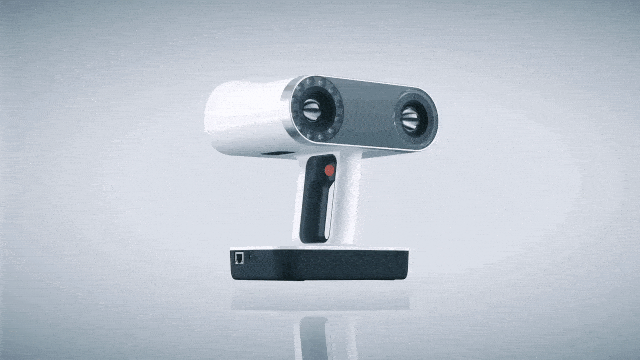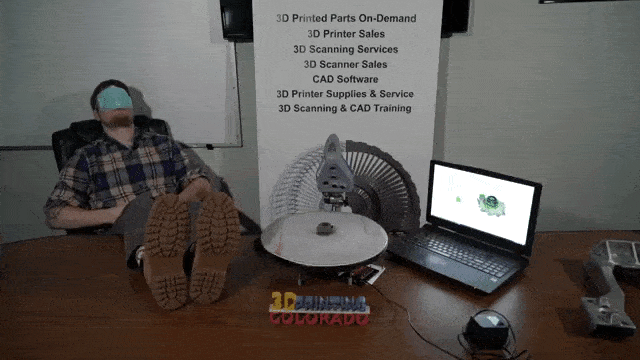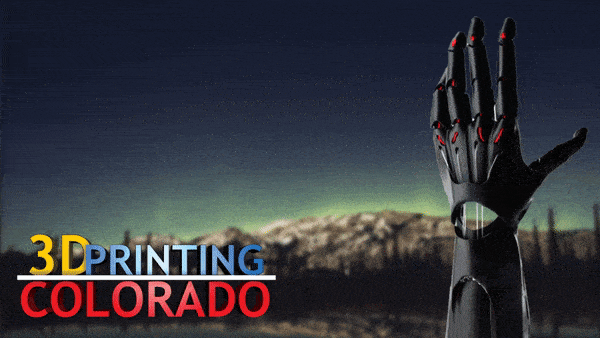

Learn more about what we do:
BOX OF PARTS FLOOR EXERCISE
Additive Manufacturing is revolutionizing the availability of parts in the field. There are several applications where this emerging technology can provide time and cost efficiency to Air Force field units. 3D scanning and printing can be used to reverse engineer broken and worn out parts that do not have existing drawing packages. Additive Manufacturing may also enable field units to optimize part design, use fewer materials and produce parts more quickly without compromising durability or quality. In the Air Force, this application is vitally important for these flight critical parts to perform as well as or better than their predecessors.
CHALLENGE GOAL
The goal of this exercise is to demonstrate 3D scanning and modeling technology. With the rise of hand held scanning, the end goal is to identify automated or hands free scanning for rapid and accurate reverse engineering capabilities.
QUALIFICATIONS FOR CONTESTANT TEAMS
Teams shall have applicable experience in the knowledge area being tested, specifically experience with hand held or arm scanners and experience with CAD and scanning and modeling software. Teams will be chosen to compete in this event. The teams chosen for participation in this challenge will have demonstrated prior experience and present emerging technologies in the field of scanning and reverse engineering.
POTENTIAL TEAMS SHOULD MEET THE FOLLOWING CRITERIA:
- Up to 6 members
- Previous experience with scanners
- Previous experience with scanning to modeling software
- Submit any examples of previous reverse engineering
experience
JUDGING PROCEDURE

Box of Parts Q&A:
1. How many parts were in the box? What sort of items were there?
There were 10 total parts in the box, but since one of the competing teams didn’t receive one of the parts (part 7), it was omitted from the competition. By the time we heard the news (day 2), we had already finished all of our scanning the first morning (thanks to our awesome scanners) so we did the part anyway.
The parts were mostly mechanical in nature, with various materials (steel, rubber, plastic, cast iron, shiny, dull):
- V- Belt Pulley
- Spare Tire Carrier
- Steel Spur Gear
- Flex Grip Drive Roller
- External Cooling Fan Blade
- Hose Manifold
- Adjustable Trailer Hitch (removed)
- Rear Engine Frame Gas
- Chain Operated Wheels for Overhead Valves
- Plastic Blower Wheel
2. Were any of them particularly challenging, or something you hadn’t scanned before?
Part 2 was unexpectedly challenging due to the angles that the plates met, blocking some of the structured light line of sight. Part 10 was challenging, but it actually went better than anticipated due to being able to scan the entirety of the fin. This was our first time scanning these parts, but we do have experience scanning mechanical parts in general. Overall, the scanning part was a breeze. We finished all scanning the first morning of the competition. Any other scans were for video b-roll footage.
3. Tell me a bit about one object in particular (or two!), and how it demonstrated your scanning expertise and/or the specs of the scanner used.
Part 8 demonstrated our scanning expertise well as we used a combination of scanners to capture data with very high accuracy in the shortest time possible. We used the Leo to quickly take a composite, then infill with high-accuracy scan data from the Spider.
Part 9 had internal geometries that were difficult to scan without proper angles/rigging. This part also had multiple moving components that had to be disassembled to scan properly. We used the Spider exclusively for this one.
Scanner specs:
The Space Spider has a retail price of $24,800.00. It comes with a 2-year standard warranty. This scanner has an accuracy of up .05 mm or .002” and resolution of .1 mm. It is perfect for capturing small objects or intricate details of large industrial objects in high resolution, with steadfast accuracy and brilliant color. It has a field of view about the size of a postcard. It is a structured blue light scanner and scans up to 7.5 frames per second. The Space Spider tracks via geometry and texture and does not require tracking dots or targets. The standoff distance is about 6 to 9 inches. Full color scanning capability and texture resolution of 1.3 Mpx. It even comes with a hard case. This is a hand-held scanner so it is portable but can also be mounted to a tripod. it is great for “in-the-lab” or “in-the-field” applications. Applications include Reverse Engineering, Industrial design and manufacturing, Healthcare, Science and Education, and Art and Design.
The Artec Leo has a retail price of $25,8000.00. It comes with a standard 2-year warranty. This scanner has an accuracy of up .1 mm or .004” and resolution of .5 mm. It is the first 3D scanner to offer onboard automatic processing. The Artec Leo is able to provide the most intuitive workflow, making 3D scanning as easy as taking a video. As you scan your object, see the 3D replica being built in real time on the Leo’s touch panel screen. Rotate the 3D model, check if you have captured all areas, and fill in any parts you may have missed. It is also great at scanning outdoors. The Leo tracks via geometry and texture and does not require tracking dots or targets. The 80 frames per second 3D reconstruction rate makes the Artec Leo the fastest professional handheld 3D scanner on the market. Furthermore, with its large field of view, the Artec Leo can 3D scan and process even large objects and scenes fast and accurately. And for even greater precision, users can point the scanner closer to the object to pick up intricate detail, just as they would zoom in with a video camera. Full color scanning capability and texture resolution of 2.3 Mpx.
4. What first drew the team to participate in this challenge?
Nick C. came across an article post on LinkedIn about the challenge from The Wholer Associates (industry analyst) that signup deadlines were approaching. We did some research on the event and thought we would be a good fit to compete. We filmed and submitted our initial “tryout” entry video later that week for the 3D Printing, and 3D Scanning “Box of Parts” tracks, however we were only accepted into the “Box of Parts” reverse engineering challenge. We thought we were well equipped to provide some viable competition in this space… so we went for it!
Our Advanced Manufacturing Olympics submission video: https://www.youtube.com/watch?v=mCGwDJVsM-8
5. What do you think led to your being shortlisted in the final 10?
We made a great case for ourselves by leveraging our deep industry experience, Gold Artec Accreditation, 3D scanning equipment/ software tools, unique innovation ideas, and great video content to showcase our skills.
6. And finally, what role do you think 3d scanning has to play in the present and future of the air force, airplanes, or aerospace engineering?
- 3D scanning plays a huge role in aero today:
- Allows the digitization of legacy components that never had CAD to begin with (such as the F-16).
- In situ repairs via scanning damaged sections of a part or aircraft.
- Analysis of stresses based on scanning a part after testing
- Enables legacy components to be taken through topology optimization workflows for fuel reduction, better performance, etc.
- 3D scanning plays a huge role in aero for the future:
- Faster innovation and development processes. More accurate simulations, etc.
- Analyze enemy equipment quickly and accurately
- Enabling space repairs without being tied to ground engineering teams



